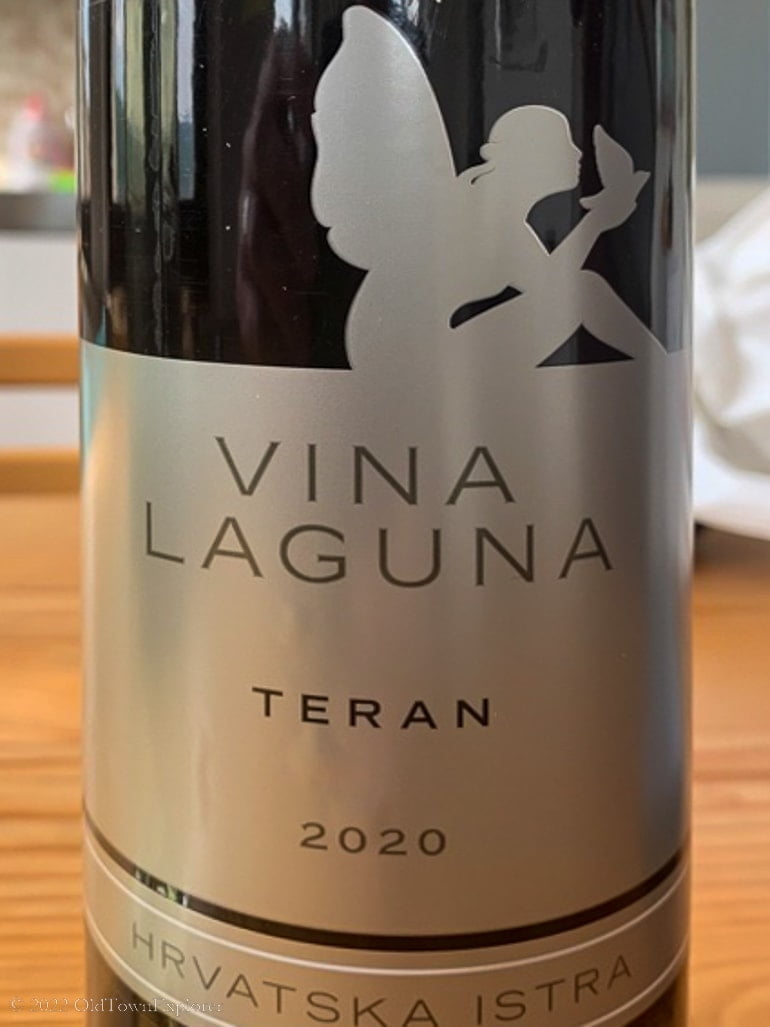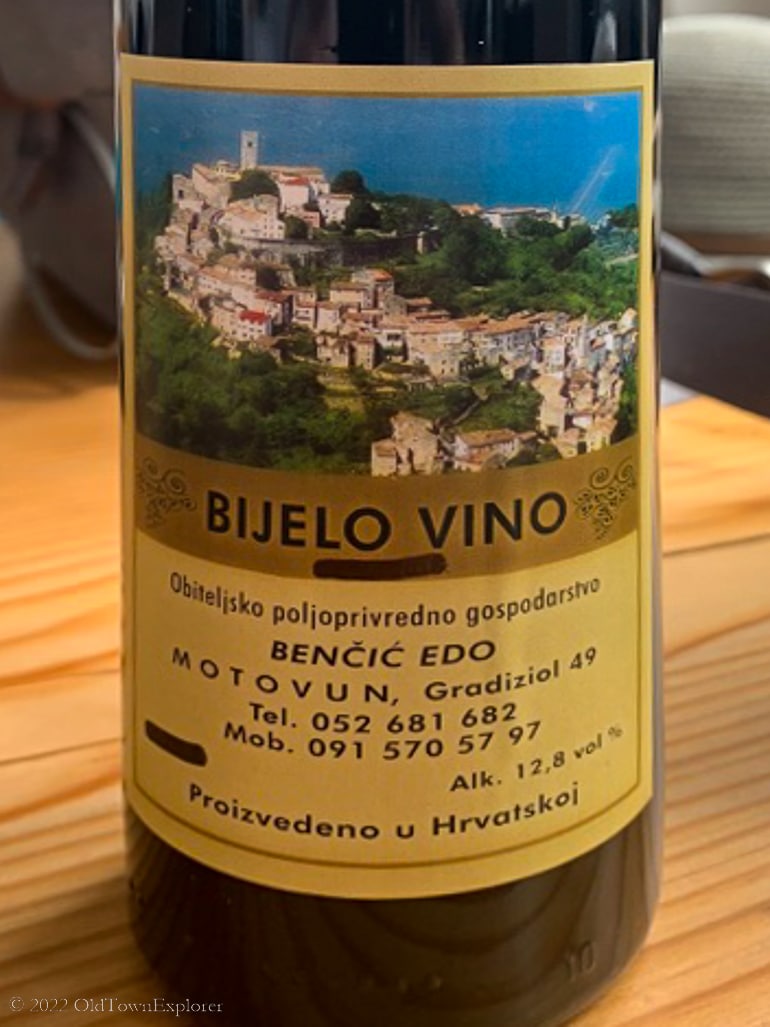Istria Wine
Explore Istria Wine: Grape Varieties & Wine Varietals
Over the last couple of years, we’ve spent a lot of time in the Istria region of Croatia. To maximize our enjoyment, we conducted a fair amount of research into Istria wine. Following is a summary of the information we’ve collected.
Significantly, the Istria wine region is one of Europe’s oldest and most influential winemaking regions, dating back to the 6th century BC when Greeks first brought grapes to the area. At various times in history, Istria has belonged to Austria, Italy, and Yugoslavia. The influences of these countries are still evident in the wine produced here. Istria offers fresh and modern wines that cater to an international audience.
Teran (red wine) and Malvazija (white wine) lead the pack of Istrian wines. Muscat dessert wine is also produced in Istria. These wines are widely available in restaurants and shops throughout Rovinj and Motovun.
Wine Varietals in Istria
Istria is known for its wine and has over 4,000 hectares of vineyards. The region’s unique microclimates allow for the growth of various grape varietals, resulting in a diverse range of wines. While the region focuses on local grape varieties such as Malvazija Istarska, Teran, and Muscat, it also produces small quantities of international varieties.
Although the number of vines reduced dramatically after phylloxera struck the region at the end of the 19th century, Istria’s soil remains rich in iron, enabling the production of excellent wines. You can take tours of many Istrian wineries to see the winemaking process from vine to bottle.
Red Wine

Teran
Teran (Hrvatska Istra) is a high-quality red wine made from Teran grapes grown in Istria’s unique, iron-rich soil. It should not be confused with Teran produced in Slovenia, which is made from a different variety named Refosk.
Istrian Teran is a deep ruby-red color with fruity aromas and high acidity and tannins.
Teran grapes are significantly impacted by their environment, which leads to vineyard and vintage differences. You can get pepper, spice, black fruits, berries, smoked meats, and tobacco.
Due to its strong flavor, it pairs well with meat and cheese dishes. Try it with some traditional Istrian pršut (prosciutto) or the fantastic Istarski sir (hard Istrian cheese).
Refosco
One of the popular red grape varieties grown in Istria is Refosco. Like Teran, Refosco is a member of the diverse Refosco family of grapes.
Merlot
Merlot has been gaining popularity among the Istrian winemakers. The iron-rich terra rossa soils of Istria produce excellent international grape varieties like merlot.
Cabernet Sauvignon
One of the popular grape varieties used in Istrian wines is cabernet sauvignon. The Istrian cabernet sauvignon wines are known for their full-bodied taste and deep red color.
White Wine

Malvazija
Istrian Malvazija (Malvazija Istarska) is a native Croatian white grape predominantly grown in the Istrian region. Don’t confuse Malvazija with Malvasia (or sometimes Malvasija). Malvasia is a different grape grown primarily in Italy, Greece, California, and southern Croatia near Dubrovnik.
There are three basic types of wine made from Istrian Malvazija:
- Base Malvazija is a lower-quality wine intended for consumption soon after bottling.
- Fresh Malvazija is produced from higher-quality grapes and can be stored for up to three years. This wine is marked IQ (Istrian Quality) to protect the quality and style of the wines. It pairs well with light pasta dishes, grilled or oven-roasted white fish, and pork tenderloin.
- Matured Malvazija is aged and released no sooner than two years after the grapes are picked. Matured Malvazija can be enjoyed for several years. Macerated Malvazija is recommended with meat dishes such as veal steaks.
Most winemakers in Istria produce at least one of these. Less commonly, it is made into semi-sweet or sparkling wine.
Dry and preferably served ice-cold, classic Istrian Malvazija is bright, fresh, and citrusy. You will also find minerality and sometimes floral or vanilla notes.
Its refreshing taste is perfect for a hot summer day and is the second most consumed white wine in Croatia. It also pairs incredibly well with the abundant coastal seafood.
Chardonnay
Chardonnay is produced in small quantities in Istria. It has a unique taste due to the region’s climate and soil, which makes it a must-try for wine lovers.
Dessert Wine

Muscat
Muscat (Muškat “Žuti”) is made from the white Croatian Muškat wine grape variety that is a member of the Muscat family of grapes. Known for its large deep cluster of loose, deep-yellow berries and golden-colored wine.
Muškat is grown mostly in Istria and northern Italy.
Muškat is a dessert wine made from late-harvest grapes that are air-dried for three months. This makes the berries shrivel and concentrates their sugar and acid content, resulting in a complex sweet wine.
FAQs About Istria Wine
Is Istria in Italy or Croatia?
Istria is a peninsula that is located in both Italy and Croatia. The northern part of the peninsula, which includes cities such as Trieste, is part of Italy, while the southern part, which includes cities such as Pula and Rovinj, is part of Croatia. The border between the two countries runs through the middle of the peninsula, with each country claiming its own portion of the land. So technically, Istria is located in both Italy and Croatia.
Where Can I Drink Wine In Croatia?
Croatia has four main wine regions – Croatian Uplands, Istria and Kvarner, Slavonia and Podunavlje, and the Dalmatian wine region.
Istria, a beautiful peninsula in Croatia, is surrounded by the sea and enjoys a lovely Mediterranean climate that provides perfect vine-growing conditions. Most wineries are located in western Istria, with most being small, family-owned farms. The locals take pride in their wine, which can be found on road signs stating, “Istria, the land of good wine.” Western Istria has a unique Italian influence, with medieval hilltop towns and rolling villages supporting Istria’s “the new Tuscany” moniker.
Does Croatia Have Wineries?
Croatia has plenty of gorgeous wineries spread all over each region. All wineries in Croatia have their own story, winemaking techniques, and unique wine tasting experiences to offer their guests.
Kozlovic Winery, located in the Istrian town of Buje, is one of the most famous wineries in Croatia. The famous sommelier, Paolo Basso, described Kozlovic Winery as one of the most beautiful wineries in the world.
What Type of Wine Is Croatia Known For?
Is Croatia Wine Good?
Croatia has a long history of winemaking, with over 300 geographically distinct wine regions and a variety of grape varieties grown throughout the country. Some popular Croatian wine regions include Istria and Dalmatia. Many Croatian wines have won international awards and recognition for their quality and unique flavor profiles.
Where Is the Best Wine In Croatia?
Croatia has several wine regions that produce high-quality wines. Some of the most well-known wine regions in Croatia include Istria and Dalmatia.
Istria is known for its red and white wines made from local varieties such as Teran and Malvasia Istriana. Istria has become increasingly popular among tourists and wine lovers alike. The rolling hillsides, altitude, and proximity to the sea provide ideal conditions for wine production. Red soil, also known as terra rossa, is the most common soil for vineyards in Istria.
Dalmatia produces a range of wines, including whites made from the Pošip grape and reds made from Plavac Mali. It’s worth noting that each region has its own unique terroir and winemaking techniques, so it’s worth exploring different areas to find your favorite Croatian wine.
